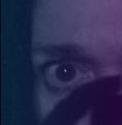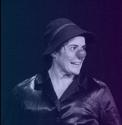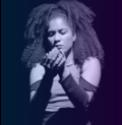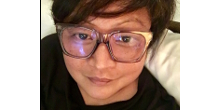Creativity As A Method
I have been thinking a lot lately about methods and ways of working. I asked questions on how we, as, artist, exist in a space and what is this space? Perhaps my reflection is more about how do we as an artist, provoke change and whether we can create an ecological system of rigour and sustainability in our practice? Each day, I ask myself, how am I as an artist advocating change, or am I merely contributing to our ecological death. But wait! This reflection is not a reflection of dread but to ask how do we as artists transcend from this ‘space’ into something more tangible and viable. Yes, we are in a crisis, a world engulfs in wrath that is streamed from neoliberalism. Maybe I am pessimistic, and perhaps I am merely asking whether creativity as a method can be a transcendental change? I am also asking whether anyone might share these similar thoughts with me, and if yes, I invite you to reflect with me on creativity as a method to change.
To begin my reflection, I will ask one fundamental question, it might seem arbitrary or even banal, but in all honesty, I am asking myself: why am I (are we) making art and who is this art for? Do not get me wrong; I am a strong advocate for art-making and process – I make a living from making performance, teaching in higher education, teaching acting and movement and performance making to both undergraduate and postgraduate level. I am also an embodied researcher and practitioner. Nevertheless, I am still asking this same question over and over again. Because I think the fight to exist is still prevalent. There is still racism, and I have encountered them on many levels, and even sometimes, I feel that some comments made though unintended is made because the person is unaware. The fact that we still have patriarchal models living and breathing in our midst, within our institutions and at the very worst, evident, in art-making processes, means that feminism must still fight on. Colonialism, exist at both a conscious and subconscious level and takes different shape and forms. There are still marginalised communities, and people are still other/ed. So, I am also asking, how to decolonise our environment? When knowledge is framed within a very euro-centric consciousness. When our thoughts and imagination still function within colonial logic (sometimes consciously and sometimes unconsciously). And as an Anglophile Singaporean, I have spent most of my life existing within that euro-centric, colonial logic consciousness.
These questions are probably tricky to unpacked. However, I would like to offer an insight to begin the process of decolonising our imagination. And to strip away the layers of post-colonial inhabitation that is within bodies that are other/ed and align our collaborators and allies to (an)other/ed consciousness. But before offering some possible provocations, I would like to share that I began asking these questions while doing my PhD research on decolonising cross-cultural performance practice. And throughout the process of my PhD journey, I turned the lens inwards and ask who was that person standing in front of the mirror and in the mirror.
So, what if we begin by asking these set of questions:
-
Who are you/we culturally?
-
What do you/we carry culturally?
-
What are your/our behavioural patterns, gestures? Are these gestures part of your/our cultural narrative?
-
What is the history of your/our body and the environment that your/our body is exposed to?
-
What is the negotiation of what seems to be happening internally and what you think is happening in the space?
-
What is this inner dialogue that it creates – and what memories surface?
I am asking these questions because we must recognise and acknowledge that all bodies are culturally different, especially within a creative space. With an awareness of who is with us within the creative process, we should then ask these next set of questions with our collaborators.
-
What is a creative space?
-
How do we exist in a creative space?
-
What do I want to happen in the creative space?
-
Do I even want anything to happen?
-
Can something happen?
-
And if something happens, how did it happen?
-
What is the something that had happened?
I am aware that there is no definite answer. But maybe this will provoke us to transcend our practice into something tangible, viable, and we can begin a process of decolonising the imagination through a sense of cultural sensitivity and awareness. This awareness will create a transversal creative space where spaces of encounters are encouraged. This transversal creative space must hold all bodies, whether censored or uncensored, to stand together and be seen. Because there are still unheard voices and narratives untold. And in this transversal creative space, we must be open and safe enough to exist and experience each other. And when we feel safe, maybe healing is triggered and perhaps creativity as a method can do just that – heal – to heal means we account for each other and begin working towards decolonising in our art-making process.
Maybe I am an idealist, but I feel that there is a need for creativity to be more than just a by-product but as a method that will transcend change.
Elizabeth de Roza
Singapore





